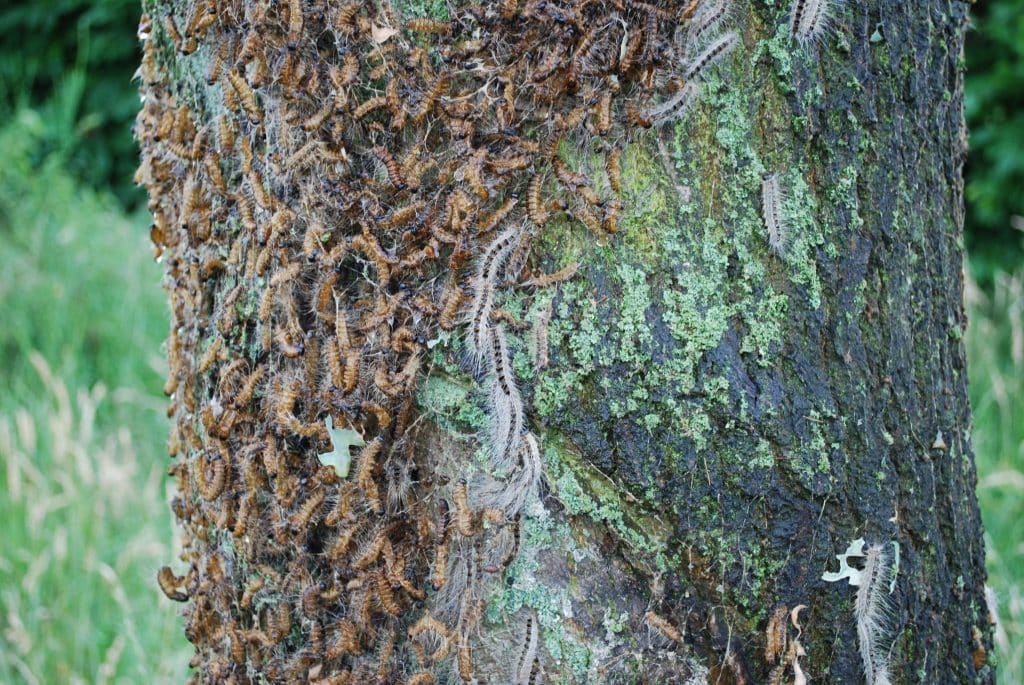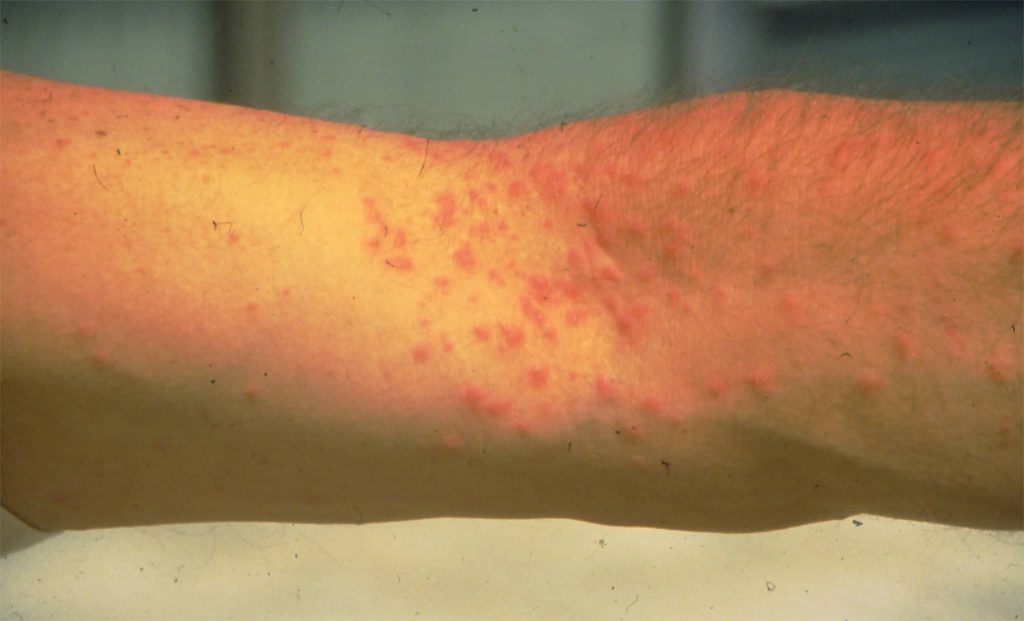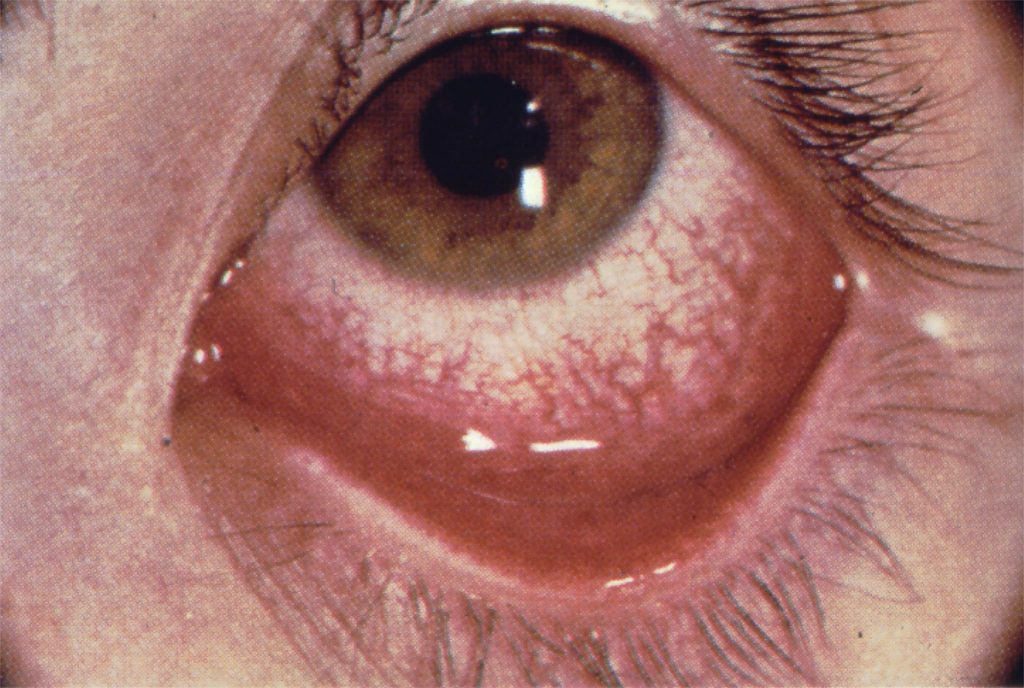Impact on health
The tiny hairs of the oak processionary caterpillar irritate the eyes, skin and airways.
These toxic hairs pose a genuine risk to health
The specific issue with the oak processionary lies in the presence of the many microscopic hairs (one tenth of a millimetre) on the caterpillars, which are formed from the third larval stage onwards (May) and which offer an active defence mechanism for the species.
These irritating hairs (setae) have a characteristic arrow shape with barbs. As a result of this exceptional shape, they can easily penetrate the surface layers of the skin, eyes and upper airways.


The hairs from nests, which could well be old, can also be passively blown by the wind or be released due to vibrations from traffic. Clothing that is contaminated with the tiny hairs can also transfer the irritant to other people. The hairs of old, dead caterpillars or old nests can also remain active for some time (over five years). Exposure to the caterpillar hairs is usually due to inhalation or via skin contact; direct contact with the caterpillars themselves is less common.
As well as causing small, painful wounds, the hairs give off a ‘toxin’ once they have penetrated the skin in the form of a foreign protein called ‘thaumetopoein’, which then causes allergic reactions. Experience with patients has shown that renewed contact or extended exposure (e.g. via clothing) can lead to the reactions worsening considerably. It is also clear that the reactions as a result of contact with these hairs can vary widely from person to person.
Effects on the skin
After contact with the hairs, the skin may present with localised symptoms within eight hours, as a consequence of the severe irritation and the inflammatory reaction. There is a painful, red rash on the skin which is also extremely itchy. The appearance of the skin can vary significantly; from bumps and spots to moisture-filled blisters, that can become infected. This may not only occur on the unprotected skin but also on other areas on the body. Sweat, itching and/or rubbing can easily spread the hairs to other parts of the body. Long-term contact with the skin may occur due to the hairs becoming incorporated into the clothing.
Without treatment, the symptoms will dissipate within two weeks, if there is no further contact. Reactions may become much more severe in the event of repeated contact.

Effects on the eyes
If the hairs end up in the eyes, they can cause a painful reaction within one to four hours; this may include redness and itching or even infection. As long as the hairs stay in place, the symptoms will continue.

Effects on the upper airways
After inhalation, the hairs may lead to irritation or infection of the mucous membranes in the upper airways (nose, throat and major airways). This may feel like cold symptoms to begin with. Some people also experience a sore throat and problems with swallowing. In some cases, there may be shortness of breath.
General complaints
Aside from localised symptoms, there may also be general symptoms, including a fever, general feeling of tiredness, dizziness and nausea.
Treatment options
In general, the symptoms dissipate within a few days to a couple of weeks. To prevent further spread of the hairs on the body and avoid a progression of the inflammatory reactions, it is important to wash the skin and rinse the eyes thoroughly with water. In the early stages, you may also be able to strip the excess hairs off the skin using sticky tape.
Because it is incredibly difficult to remove the hairs from clothing, you are advised to wash thoroughly with soap and water, particularly if the person concerned has been in an affected area and has suffered from a reaction to the hairs.
If symptoms are moderate, you may not need to treat them with medication. In the event of serious itching, this may be soothed by locally applied camphor or menthol or antihistamines can be taken. In the event of severe issues, you must consult your GP.